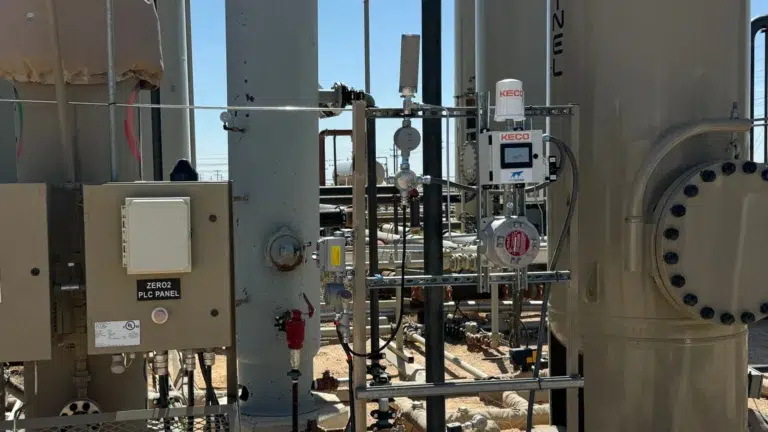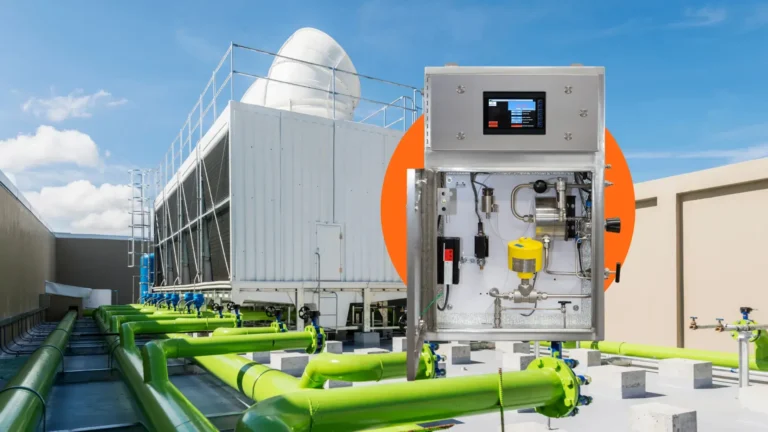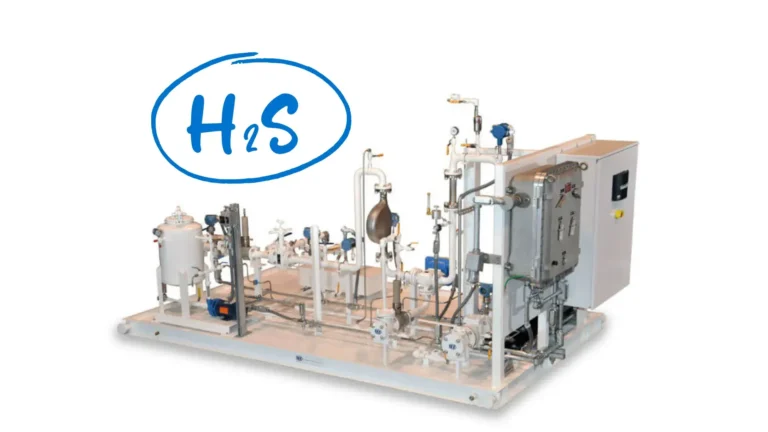H2S Content In Crude Oil: Ensuring Accurate Measurements
December 10, 2015
The measurement of hydrogen sulfide (H2S) in crude oil is a critical practice for quality control and safety purposes. Without precise quantification of H2S in a process, efficient processing of crude oil is not possible. To maintain safety when transporting crude oil and condensate, measurement of the H2S content is vitally important.
The Benefits Of Accurately Measuring H2S For Quality Control
Measurement of hydrogen sulfide (H2S) is a beneficial practice for product quality control purposes and for personnel safety of those who may come in contact with sometimes fatal sour gas. Crude oil with low levels of H2S is more valuable than crude with high H2S as low H2S level oil can be more readily processed into petroleum products.
Its Role In Efficient Processing
Without accurate quantification of H2S in a sample stream, efficient removal of the H2S is not possible. H2S analyzers are utilized for this quantification of H2S in various systems in order to optimize the process and cut costs.

Safely transporting crude oil is becoming an increasingly important requirement in light of recent rail car derailments. Hydrogen Sulfide is a toxic and deadly gas that is often present in crude oil (sour crude) and condensate.
Even small amounts of H2S present a health risk to personnel transporting the sour crude oil and condensate as well as the public in case of accidents. The U.S. Occupational Safety and Health Administration (OSHA) warns H2S is an irritant and a chemical asphyxiant that can alter both oxygen utilization and the central nervous system.
Death can result from exposure to sulfide gas vapors at levels of just 100 ppm.
H2S is highly corrosive. Over time corrosion from H2S may occur in pipelines, rail cars, trucks and other transport vessels that deliver crude oil: which may lead to deadly accidents.
The Pipeline and Hazardous Materials Safety Administration (PHMSA) recently issued a safety alert on January 2, 2014 following the train car derailments that caught fire west of Fargo, ND, and Lac-Megnatic, Quebec, indicating crude oil being transported from the Bakken region “may be more flammable than traditional heavy crude oil.”
Although there is debate as to whether the flammability of the Fargo cargo was due to high H2S levels or simply the highly volatile properties of the crude oil, most rail, truck, and pipeline facilities are now requiring low H2S content in crude oil and condensate.
Some institutions and companies have implemented policies to turn away crude oil with more than 5 ppm H2S content.
The U.S. Federal Energy Regulatory Commission (FERC) is standing behind Enbridge Energy Partners by ruling that states Enbridge “reserves the right to reject crude that does not contain a hydrogen sulfide content of 5 parts per million (ppm) or less.”
The rule went into effect in May of 2013.
The FERC also approved a 5 ppm H2S limit by Tesoro Corp. effective January 1, 2014 and True companies at 10 ppm H2S limit effective April 1 of 2014.
OSHA has set the maximum exposure limits of hydrogen sulfide “at either 10 or 20 ppm… with an absolute prohibition of exposure above 50 ppm.”
Economic Benefits Of Continuous Monitoring
Continuous online monitoring of hydrogen sulfide can pay for itself by preventing product loss, meeting sales specifications, and protecting personnel by verifying hazardous amounts of hydrogen sulfide are not present in the product before transportation. Continuous analyzers also eliminate costly and timely lab analysis costs which cannot offer real-time measurement of hydrogen sulfide in the crude.
Methods of Sampling Hydrogen Sulfide in Crude Oil
Due to the opaque nature and complex compositional characteristics of crude oil, direct optical measurement is difficult. To circumvent this problem, the composition of the crude oil (including the hydrogen sulfide) can be representatively “stripped” from the liquid phase into the vaporous gas phase for precise measurement by a gas detector.
Two primary methods exist for stripping (or recovering the composition of) the crude oil for measurement by a gas detector for continuous analysis:
The ‘headspace’ stripping column and the use of the Sample Transfer Stripper™ utilizing a variety of proprietary membrane technologies.
Both of these methods are based in part on Henry’s Law and partial pressures of the components in the sample:
“At a constant temperature, the amount of a given gas that dissolves in a given type and volume of liquid is directly proportional to the partial pressure of that gas in equilibrium with that liquid.”
Headspace Stripping Column
The headspace stripping column requires crude oil to continuously flow into a temperature controlled pipe (several inches in diameter) while a stripping gas flows in the opposite direction against the crude oil.
The combining agitation of the stripping gas and the constant heat and pressure of the column persuade the compositional vapor of the crude oil to strip from the crude oil and into the stripping gas which then carries the vapor to the detector for analysis.
The headspace stripping column system requires a multitude of parts to maintain constant flow, heat and pressure of the crude oil sample. The column is normally a large component. Several feet of length is normally required to effectively serve its purpose. Oftentimes, multiple columns are required. Much care must be given to the headspace column to prevent the crude oil from “carrying-over” into the stripping gas line which requires cleanup of crude oil in the air sampling lines and the contaminated detector and/or flow cell.
Precise control of sample flow and pressure; carrier flow and pressure; and temperature becomes critical to the proper functionality of the headspace column stripper system. It is important the crude oil is evenly dispersed inside the column to ensure the stripping gas effectively contacts all of the crude oil sample. In reality, this is difficult to accomplish with the headspace column stripper system as the crude oil tends to clump to one side of the column instead of being evenly distributed. Inaccurate measurements are frequent with this method.
Sample Transfer Stripper™
Alternatively, the membrane Sample Transfer Stripper™ is a simple and straight forward approach to extracting a proportional compositional vapor from the crude oil for quantification. The Sample Transfer Stripper™ employs the use of membranes to efficiently and proportionately separate the crude oil composition from the liquid sample for analysis. The device is a simple and elegant. At only 5″ high and 3.5” wide it provides an ultra-clean and dry sample to the detector for analysis without demanding valuable real-estate.
The Sample Transfer Stripper™ operates based in part on Henry’s Law and employs the partial pressure of the sample for compositional extraction into the vapor phase. The crude oil sample flows into the heated membrane stripper where it continuously sweeps one side of the membrane. The composition of the sample then permeates through the membrane into vapor-phase where the carrier gas sweeps the sample to the detector for analysis.
The membrane in the Sample Transfer Stripper™ acts as a physical block, preventing mists and other contaminants from passing through the carrier gas tubing lines and onto the detector. There is no risk of “carry-over” from the crude oil. This prevents buildup of contamination in the sample line which would otherwise cause in/out gassing and inaccurate readings over time due to gradual contamination of sample tubing walls. Because the membrane technology uses 90% fewer parts than the headspace column stripper, maintenance requirements are radically reduced.
Methods of Analysis of H2S in Crude Oil Headspace
Now that we have an effective method to extract the representative headspace in a reliable manner using the Sample Transfer Stripper™, we must now quantify the concentration of H2S accurately. Due to the complex compositional makeup of crude oil headspace, UV and laser absorption spectroscopy struggles to measure H2S, especially in single and double digit ppm levels.
This rules out UV and laser absorption spectroscopy as a reliable method to quantify the hydrogen sulfide in crude oil headspace.
Colorimetric-Ratiometric Tape Method
The colorimetric-ratiometric tape method of analysis is the only proven method to measure hydrogen sulfide in crude oil headspace without any interference from components similar to H2S. The method is described in several ASTM methods including ASTM 4084-82.
There are several advantages to the tape method of analysis, including:
- Automatic ‘zero’ affect. The analyzer never suffers from a ‘zero drift’
- The tape method is specific only to H2S proven by thousands of worldwide applications
- Tape roll life has been extended to 3-6 months
- The analyzer does not require routine calibrations in the field. The factory calibration remains stable for years
- The tape method offers a wide range ability including ppb, ppm and up to 100% saturation
- The tape method is innately linear in response, no need to calibrate in the field
Delivering Precision And Safety In H2S Measurement
The Model 205 Analyzer utilizing the Sample Transfer Stripper™ membrane stripper and colorimetric-ratiometric tape method of detection has been shown to be the most reliably way to measure hydrogen sulfide in crude oil. Accurate measurement of low ppm levels of H2S in a complex liquid stream (such as crude oil) on line is a major challenge.
Consequently, the colorimetric-ratiometric paper tape combined with the proprietary membrane technology in the Sample Transfer Stripper™ method remains as sensitive and reliable a method as is practically achievable in today’s environment.
This article was adapted from a paper given at an ISA AD Symposium in 2015.
The title was “Measuring H2S in Crude Oil for Quality Control and Transport Safety“.
Request a Budgetary Quote for Your Application
Provide your project specifications, industry details, and end-use location to receive a tailored pricing estimate from our team.
Request Budgetary Price





